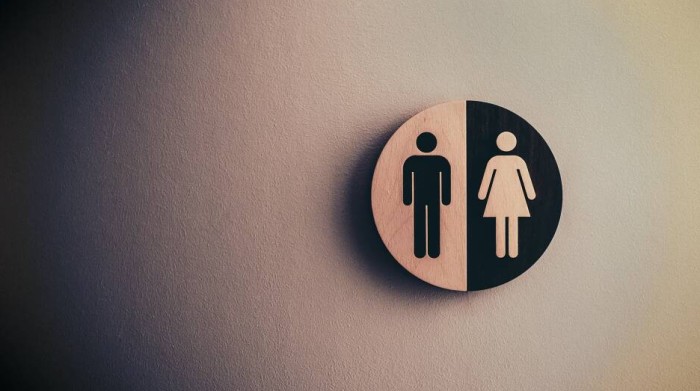Index
What is gender marketing?
It is estimated that a person is overwhelmed by a total of three thousand advertisements on average per day. Faced with this avalanche, it is vitally important to have innovative strategies that capture the customer’s attention. In this sense, gender marketing (Gender Marketing) is very useful, since it is a new marketing supported by the science of neuromarketing, as we explained previously in another blog post .
In summary, we explain that both sexes differ in terms of their priorities, their perception of the environment, and their communication and decision styles. In this way, gender marketing shows this contrast by reflecting in its products these differences that will determine their consumer desires, in such a way that they end up acquiring the promoted products.
Gender marketing strategies for the male segment.
First of all, it must be taken into account that the behavior of the male consumer is mainly pragmatic. The man values self-sufficiency and ease when shopping. It does not usually require the help of the dependent, unless you request it.
Since their purchases are based on what they need from a practical and logical point of view, it is more effective to give them very specific information about the product and explain its objective benefits clearly and directly , showing the product as a good with which to achieve superiority over the rest (given its highly competitive nature).
The exploitation of the senses in marketing.
When it comes to the use of the senses, men buy based mainly on visual stimuli. They find complex geometric figures interesting , as well as graphic stimuli and objects with edges and angles.
In addition, those images in which the product associated with sex or inciting it is presented arouse their interest . In fact, it has been found that advertisements of an altruistic and non-concise nature do not make a dent in them, hooking themselves on advertisements for immediate consumption or pleasure.
As for colors, it has been proven that brown and green objects attract more attention to men . They have little attraction to pink or black colors. In this way, men opt for typically masculine colors, dark and not excessively bright .
As for the smells , men opt for those citrus and natural ones. For this reason, it is recommended that the store where your products are deposited have odotypes that contain this class of fragrances.
(1) – There is marketing with specific strategies for men.
Gender marketing strategies for the female segment.
If there is one word that can define female consumer behavior, it is emotional . This means that it gives the same importance – or even more – to the experience that surrounds the acquisition of the product than to the actual function that it is going to give to it.
For this reason, it is important to highlight the inconvenience of launching an advertising campaign that generates concern, anguish or pressure to make the purchase. In other words, advertising that creates concern should be avoided. An example of this would be phrases such as: “Call now!”, “Don’t wait any longer!” or “it’s now or never!” On the contrary, it is beneficial to base advertising on positive emotions.
The exploitation of the senses in marketing.
With regard to the use of the senses, women make their purchases mainly guided by olfactory stimuli (preferably fruit and floral), followed by auditory ones.
Also , they are attracted to rounded shapes and warm colors. In this way, he powerfully licks his attention yellow and orange colors and ignores brown and black colors. For this reason, it is important that the packaging includes typically feminine colors, especially low tones.
It is also recommended that the packaging contains many details , as this will draw your attention to the product. On the other hand, it has been found that including images where other people appear consuming the product encourages its acquisition.
It should be noted that women enjoy buying new products. They have a great capacity for language (both verbal and non-verbal). In addition, they tend to compare data between different products, to make the decision that they consider most appropriate.
Therefore, it is important to include as much data as possible in an orderly manner. The packaging must collect a large amount of information. It must also be visually attractive through the use of colors and even through the use of fruit and floral odotypes in the store.
It is recommended to play pleasant and relaxing ambient melodies. Loud or repetitive music can divert attention from the product for the female consumer.
Women value the opinion of other consumers
On the other hand, it can be helpful to include opinions and stories from other real consumers . Women highly value the social component associated with shopping. They like to share their shopping experiences with others, especially when they detect falsehood about something related to the product.
In this sense, it is important to emphasize that women are the ones who are usually in charge of advising and buying products for the whole family , even looking at products that they were not initially going to buy. For this reason, it is towards them that most of the visual and auditory advertising should be directed. In addition, women buy up to 5% more than men online, so it is convenient to design the websites in a differential way.
(2) – Female marketing strategies are different from those of men
Who values discounts more: men or women?

If there is one factor that arouses interest in women, it is promotions and discounts. So much so that there are many who frequently inquire on the web pages of different products and / or social networks to compare opinions on equivalent products. In addition, they compare prices in order to achieve the most profitable acquisition.
Therefore, it is advisable to use social networks or marketing companies for the distribution of offers and discounts. However, it should be noted that the price of the product is not the most determining factor in women’s desire to purchase. L or that women value most is the packaging or presentation of the product, followed by visual advertising and, finally, price.
The man values the price more than the presentation of the product. This is due to their pragmatic and logical approach to shopping.
Differentiated marketing for mothers and pregnant women.
Numerous studies have shown that the maternal brain behaves differently from the non-maternal one. In fact, it has been found that it is easier to capture the attention of the mother’s brain. This is because the senses of these women are heightened and they are more alert in everything that refers to maternal care.
In addition, their brain predisposes them even more to group interaction. Therefore, if a product gets bad reviews, they will be shared especially quickly due to the vital importance of its offspring.
Likewise, it must be taken into account that, during this stage, women avoid any type of conflict to a greater extent. For this reason, they will reject products that cause them excessive discomfort or concern.
Regarding the images to use, it is convenient to use those where mother and child appear in moments of relaxation. They are especially useful, those in which it appears taking care of the baby. This is because the brain of the new mother will ignore all those products that do not satisfy any need of her or her baby by not identifying with them.
During this period, the woman seeks understanding and positive emotional messages , which helps her to regulate her mood.
Is there price discrimination by gender?

Different market investigations have confirmed that both the “pink rate” and the “blue rate” exist. That is, women and men pay a greater or lesser amount depending on the gender to which the product is oriented.
For example, men’s clothing and fashion accessories can cost 23% more than women’s. This difference reaches 38% in shirts.
This situation is reversed when it comes to perfumery and beauty products. Here women pay 11% more on average than men for their corresponding version of the same product. The difference is especially noticeable in shampoos, conditioners, shower gels, and toiletries.
However, the companies confirm that this notable price difference is not due so much to gender, but to the supply and demand of the products in the market (assuming that all products had the same level of production). This means that, for example, given that women consume more products related to hygiene and aesthetics than men, they would also be willing to pay more.
On the contrary, companies tend to reduce the male cost of creams, perfumes and gels in order to encourage their consumption.
(3) – Women pay more for perfume and cosmetic products
Controversy over price differences.
Despite this explanation of market regulation, it is not a few times that these rates have been surrounded by controversy. Without going any further, the consumer defense organization, FACUA, denounced this situation of alleged discrimination. In May 2018, it charged several supermarkets, claiming that since the pink razors cost up to 171% more than the blue version, it was a ‘fraudulent pink fee’ .
The latter contradicts the results of an investigation from the previous year. In it, more than a thousand products were compared and it was concluded that the famous “pink rate “ was not significantly discriminatory. According to the study, the price differences were justified by the characteristics of the product itself, to which they provided some added value.
This same research stated that, although women are willing to spend more on certain products, they are not willing to pay a higher price, which is why they have a greater offer than men.
Do you apply different marketing strategies to LGTBI + consumers?

Regarding LGTBI + consumers, there is still much to investigate, but it has been shown that they have a different consumer behavior. For example, they are highly loyal to brands and are passionate about new tech products, especially mobiles.
Gays tend to focus more on aesthetics , which is why specialized advertising (Pink Market) is often advertised in spas, gyms, restaurants, clothing and perfumes.
Instead, the Pink Market for lesbians tends to be culturally oriented . It focuses more on bookstores, cultural shows, cinema and music.
Around 77% of this group travels at least once a year, spending up to 35% more than a heterosexual. They consume noticeably more beauty products. It is estimated that lesbians spend up to 60% more on average on beauty products than other women.
Although all these data show that their consumption in cultural articles (bookstores, trips and shows) and beauty (gyms and clothes) are higher, how does the marketing strategy differ with respect to the heterosexual group?
Pink marketing uses different sales strategies
Brands focused on the LGTBI + collective
For now, brands have focused on designing products that generate feelings of acceptance towards oneself, not as directive or obvious as for the rest of the market. An example of this are the ads for the Desigual brand.
However, at present, the Pink Market is too homogenized , as there may be gays with a buying profile closer to the male or more similar to the female, since a person can be of a specific sex but have behaviors, attitudes and tastes associated with the opposite gender.
In this way, even if their chromosome marked their differential perception, their selective attention to certain products would be different. Perhaps this reason has contributed to the current trend of brands to create unisex products , since gender is acquired through socialization and, after all, it is consumers who create and promote stereotypes that are later reproduced by brands.
Alexa Clark specializes in Cognitive Behavioral Therapy. She has experience in listening and welcoming in Individual Therapy and Couples Therapy. It meets demands such as generalized anxiety, professional, love and family conflicts, stress, depression, sexual dysfunction, grief, and adolescents from 15 years of age. Over the years, She felt the need to conduct the psychotherapy sessions with subtlety since She understands that the psychologist acts as a facilitator of self-understanding and self-acceptance, valuing each person's respect, uniqueness, and acceptance.




